Fairies of the Meadow
Somewhere in West Sussex is an enchanting meadow, concealed from sight and unchanged for centuries. Early morning or late evening walkers are almost guaranteed to see elegant little Roe deer grazing in the fields. I've been visiting this wonderful place for several years and I always take time off to see the deer in early summer. It would be unfortunate if this yearly activity was placed at risk in any way, as Roe can only tolerate a limited amount of attention from interested parties. In my younger, naive days, I openly advertised the location on the web, which has had long-term consequences. Ultimately, these sensitive animals could be repelled from the site and no-one wants that to happen.
I've worked relentlessly hard during my time off to produce this work. Being a wildlife photographer without a car requires a lot of effort, good fitness and plenty of patience. The meadow hosts a variety of pests, including deer ticks, mosquitoes, horseflies and midges. My equipment weighs an absolute ton and it has to be carried to and from train stations and bus stops.
To maximise impact, photographers often exclude context and this is something I wanted to avoid. In keeping my distance from the animals, the inclusion of tall grasses, dense buttercups and thick trees tell you that Roe deer are shy animals, who don't really take to having a lens pointed at them. Signs that a photographer has overplayed their hand and got too close, include raised hairs around the bottom, tense rabbit-in-headlights expressions and an awkward standing position, suggesting the deer has come to a sudden stop. Extreme close-ups, direct eye contact and hyper-alert postures may satisfy our human desire for intimacy and familiarity — we want to believe that we are relevant to wild animals — but the truth is that Roe deer have completely different needs from us.
I've worked relentlessly hard during my time off to produce this work. Being a wildlife photographer without a car requires a lot of effort, good fitness and plenty of patience. The meadow hosts a variety of pests, including deer ticks, mosquitoes, horseflies and midges. My equipment weighs an absolute ton and it has to be carried to and from train stations and bus stops.
To maximise impact, photographers often exclude context and this is something I wanted to avoid. In keeping my distance from the animals, the inclusion of tall grasses, dense buttercups and thick trees tell you that Roe deer are shy animals, who don't really take to having a lens pointed at them. Signs that a photographer has overplayed their hand and got too close, include raised hairs around the bottom, tense rabbit-in-headlights expressions and an awkward standing position, suggesting the deer has come to a sudden stop. Extreme close-ups, direct eye contact and hyper-alert postures may satisfy our human desire for intimacy and familiarity — we want to believe that we are relevant to wild animals — but the truth is that Roe deer have completely different needs from us.
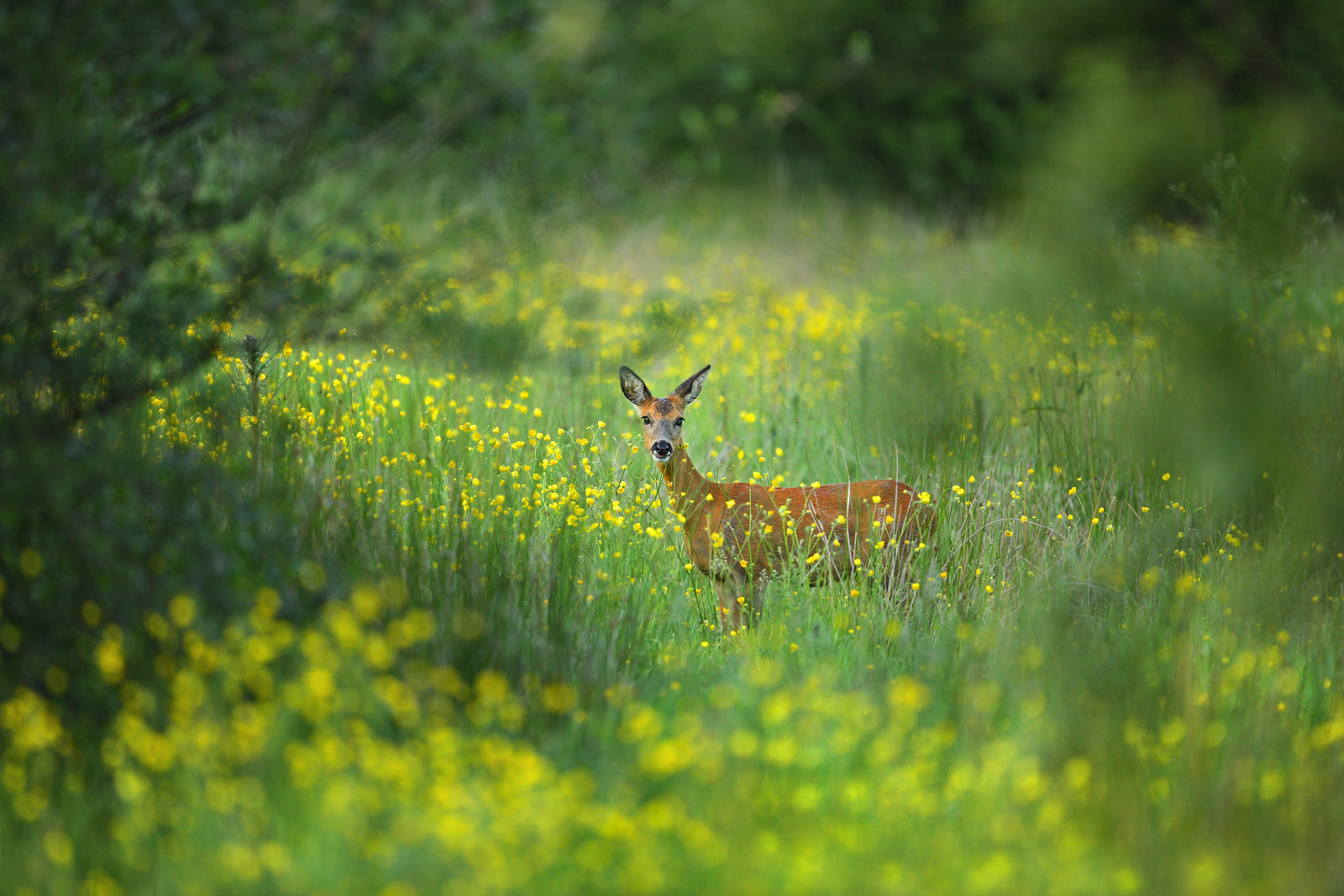
This
doe and two companions were completely preoccupied with stuffing their
mouths full of buttercups, that they didn't mind me standing 20 metres
away. I've never seen a deer eat so much, so quickly. The doe briefly
looked up to check me out, before continuing with her feeding.
Cumulonimbus clouds, which had been developing to the north since 4pm, flashed with lightning 21 times per minute. It had been very warm for late May, with 27°C recorded. The abnormally high May temperatures are part of an ongoing trend
as our climate gets warmer. Apart from one or two bad days, May was like
a summer month, with three distinct very warm spells, high humidity and
thunderstorms.
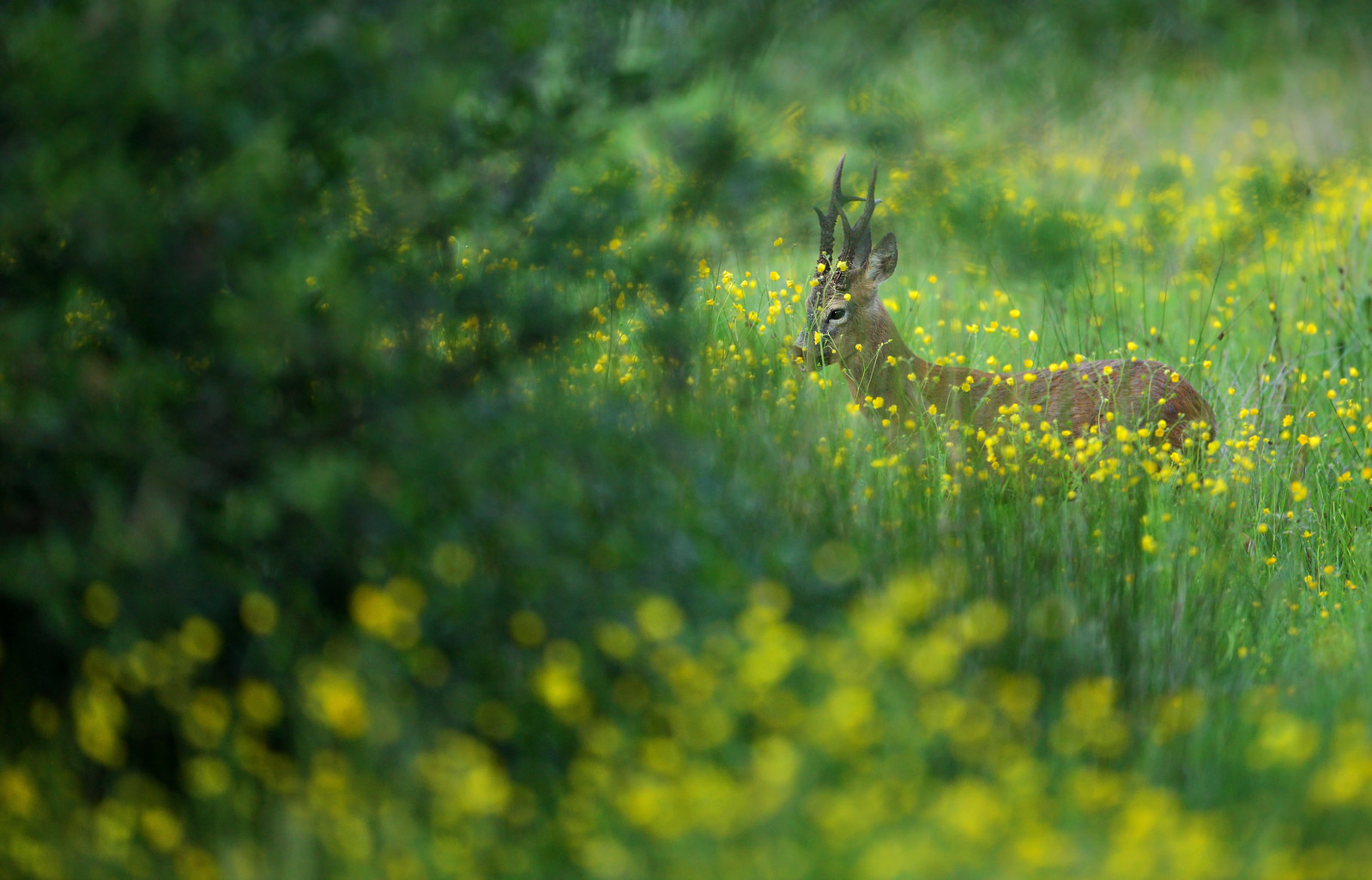
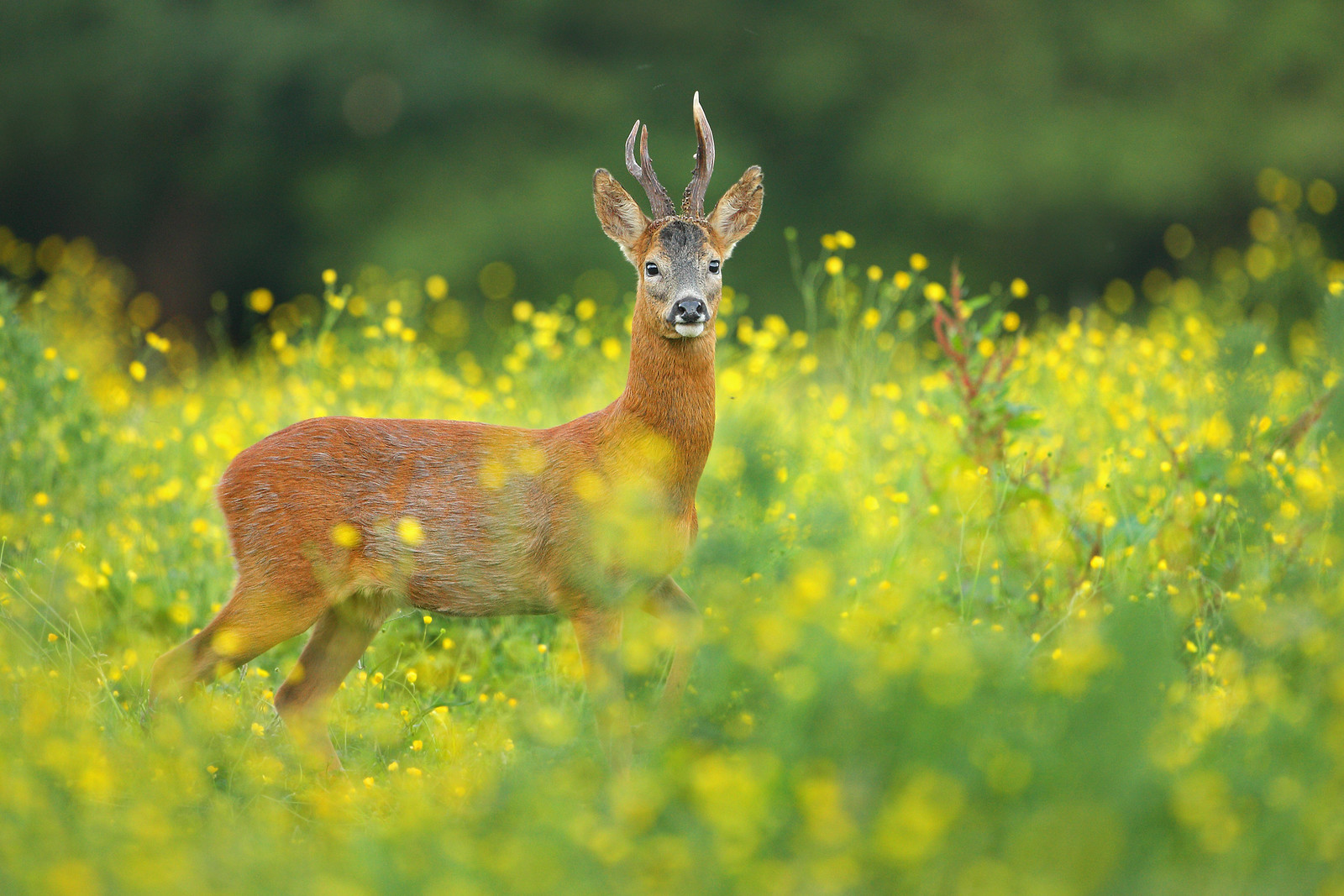
I photographed this very handsome buck on my last visit to the meadow for a while. He might not be a manspreading Alpha Male (more about him later), but he's definitely the Paul Newman of the meadow. I like the fact that he's alert, but not alarmed. Sadly, his feeding was cut short by two horses, who decided to come over and try to befriend me.

I was sitting at the edge of a buttercup meadow, when this exotic-looking and extremely beautiful doe ran past me, obviously escaping from disturbance in the adjacent field. Her bottom area was covered in something, which suggested she had recently given birth. I'd never seen her before, but was very taken by her gazelle-like, angular features. Roe deer are completely unaware of their beauty or why that tall humanoid keeps pointing a funny looking eye in their direction.
The pregnant doe in the next two images was quite happy to graze as I stood nearby under some trees. I was glad to photograph her looking relaxed, as all too often one can unintentionally disturb them by being in the wrong place at the wrong time or making noise. I find that most wild animals and birds feel threatened when a photographer directs a lens at them, as it resembles a giant eye.
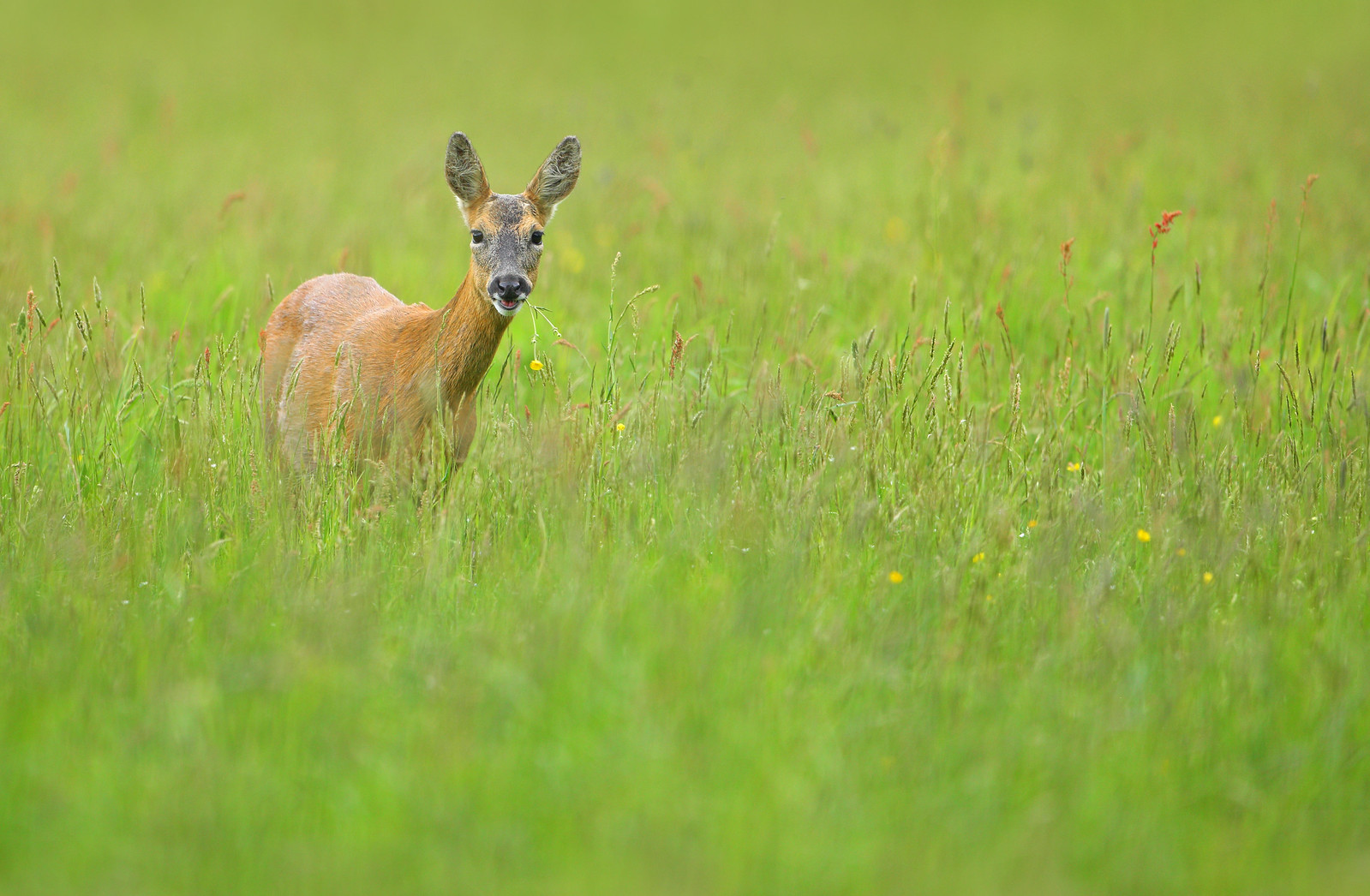
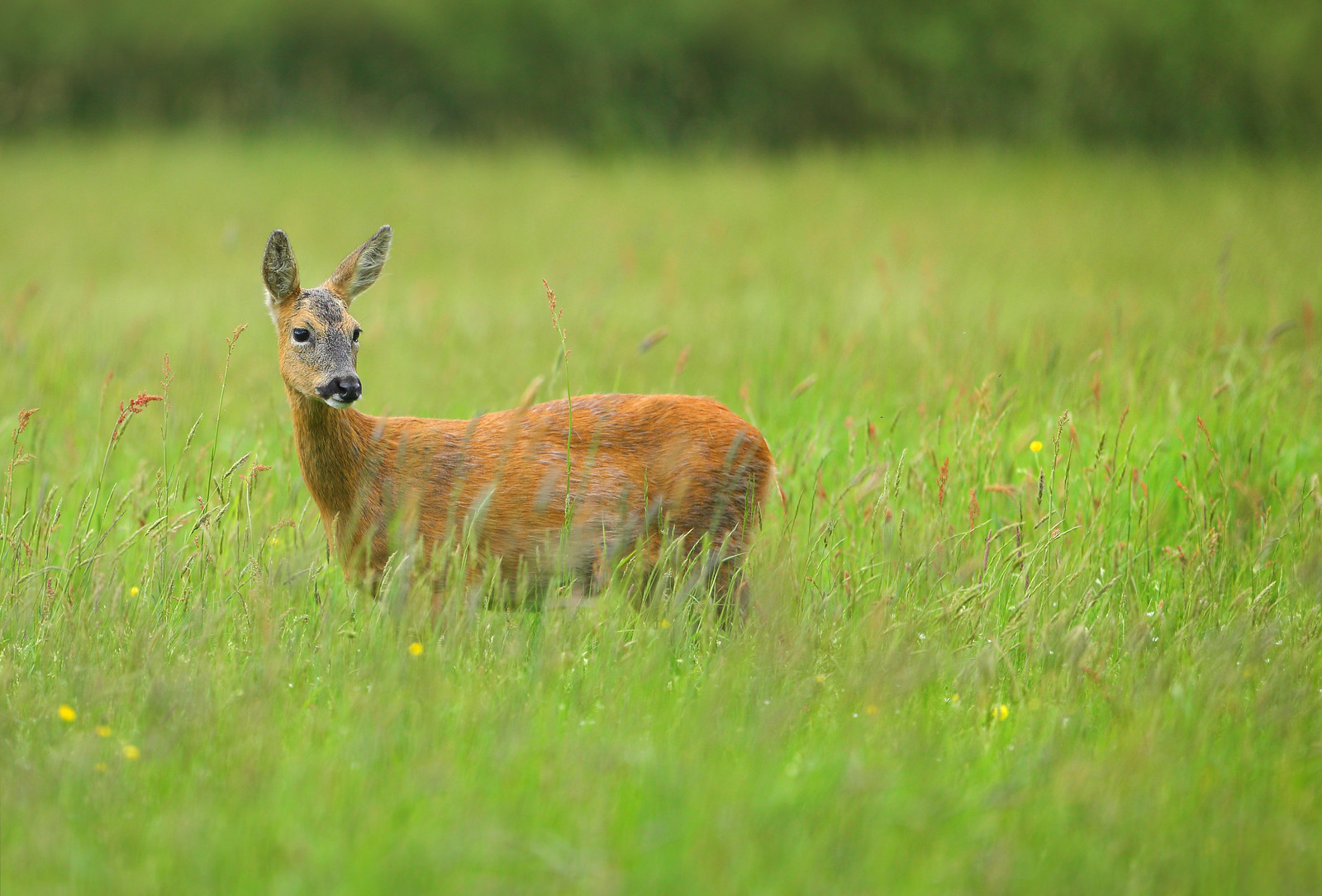
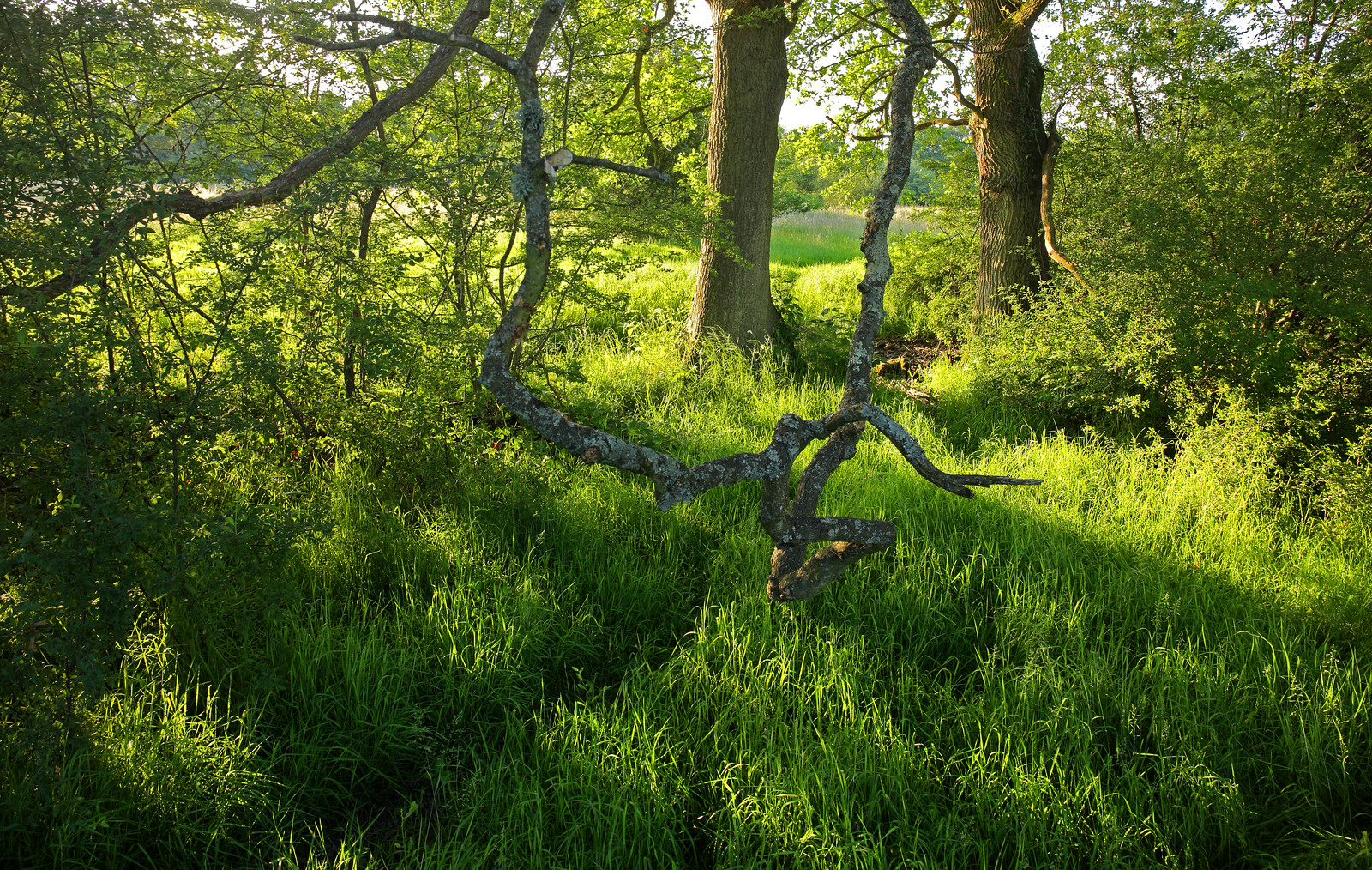
The fields are a splendid example of traditionally managed unimproved grassland, featuring drainage ditches and oaks around the periphery. Buttercups, orchids and thistles grow over the summer. Stalking Roe deer is a painstakingly slow process, with long periods of waiting around, but this gave me ample time to tell the story of these wonderful animals in the context of their environment. Over one week, I followed the blooming stages of five Common Spotted Orchids (see below).
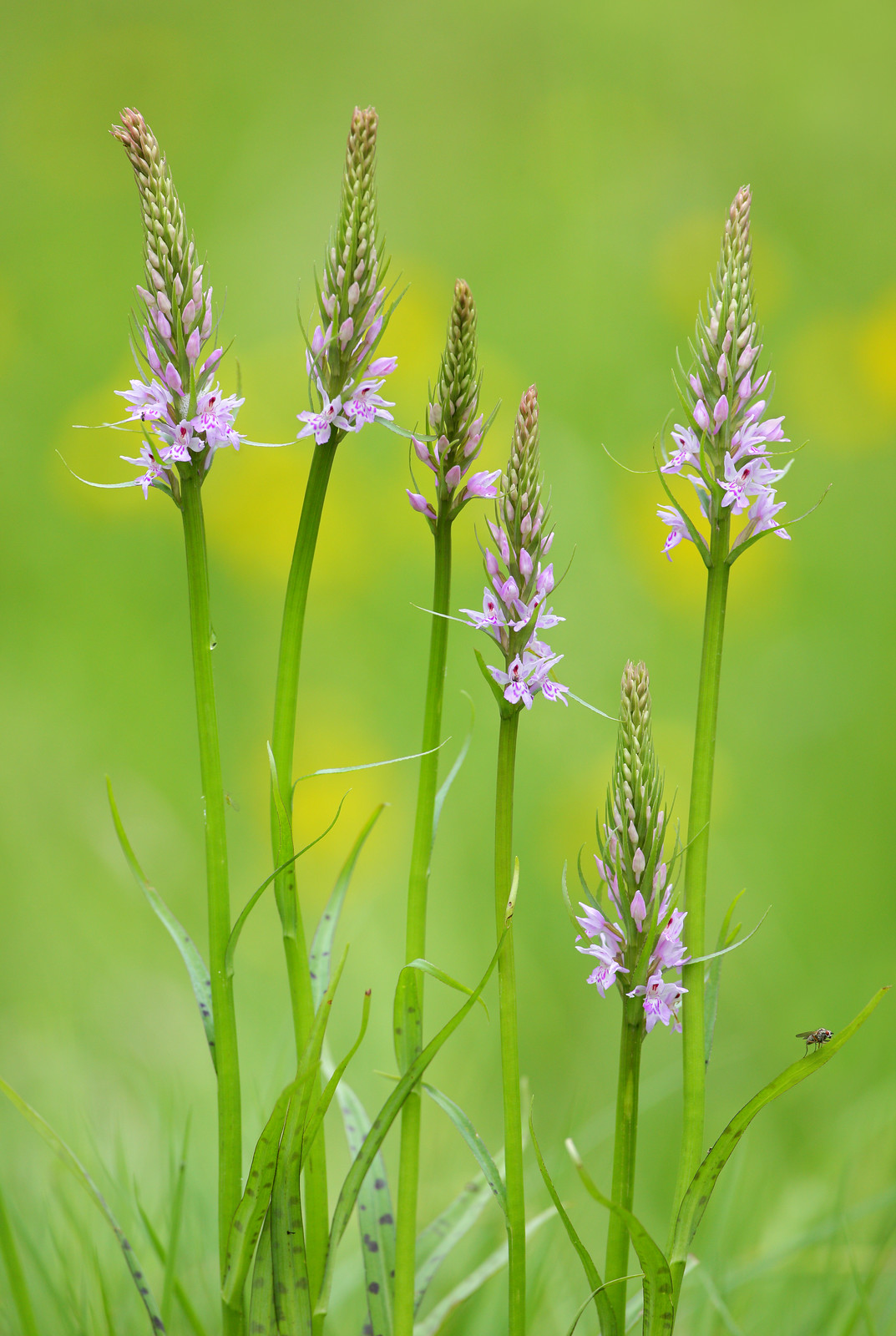
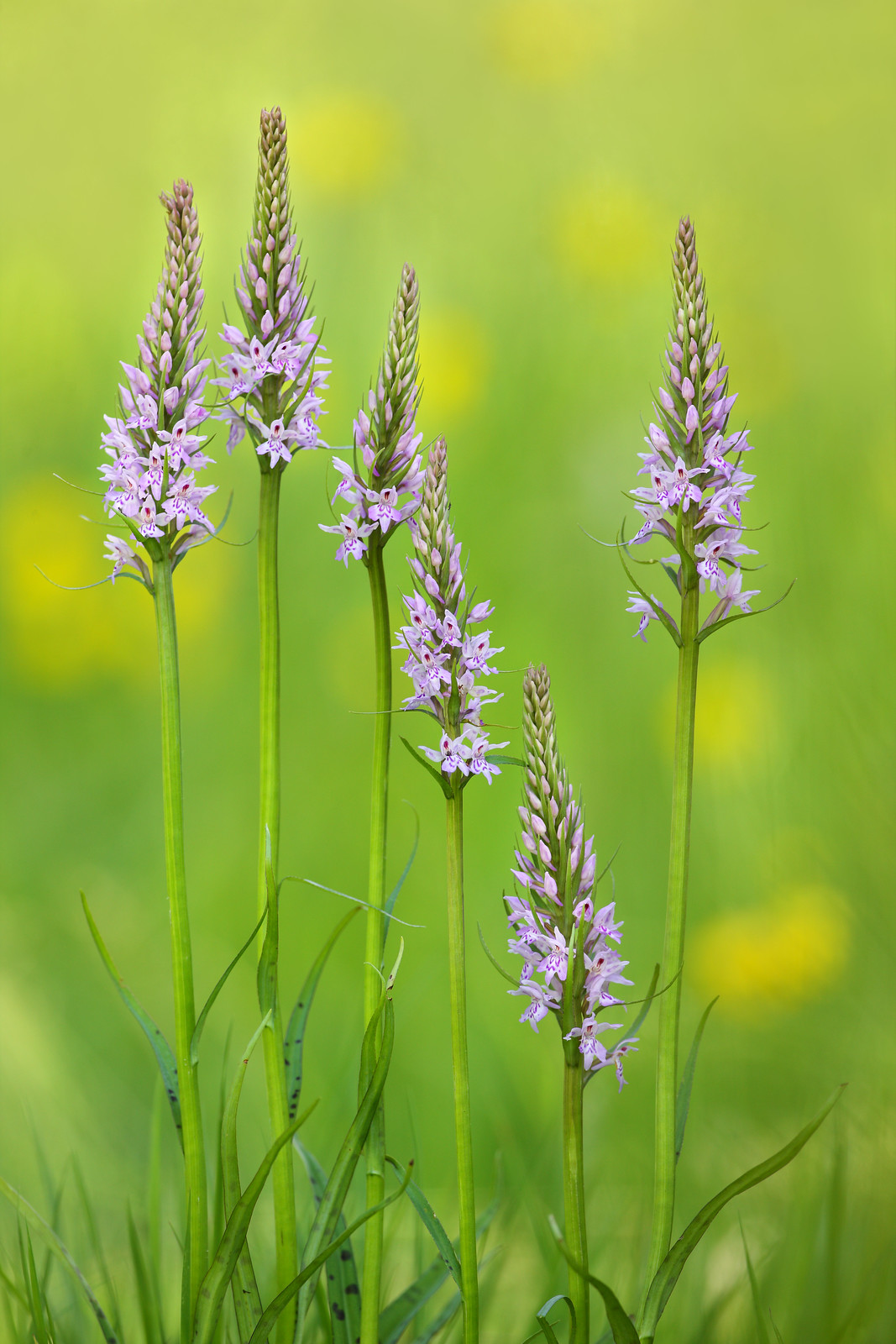
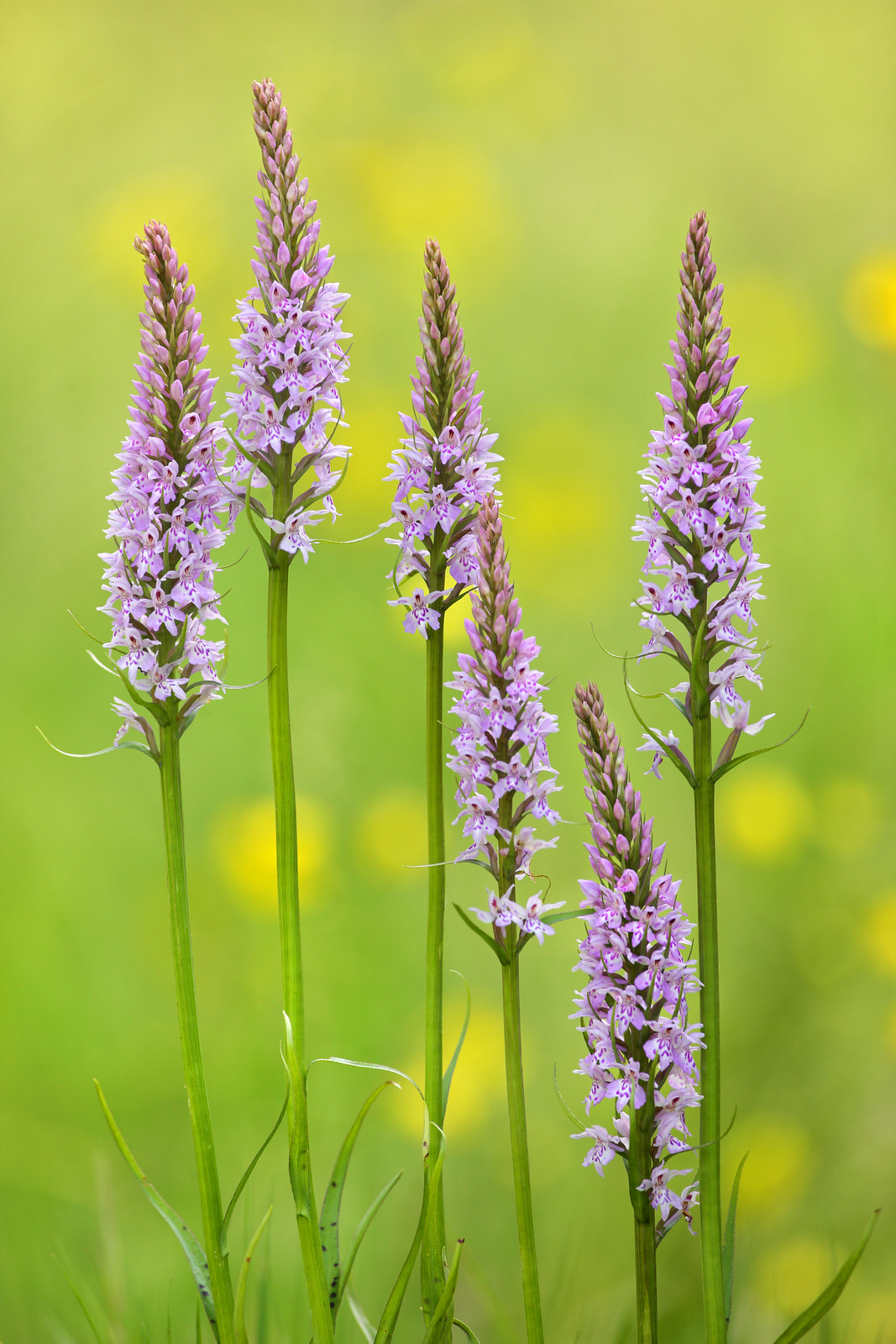
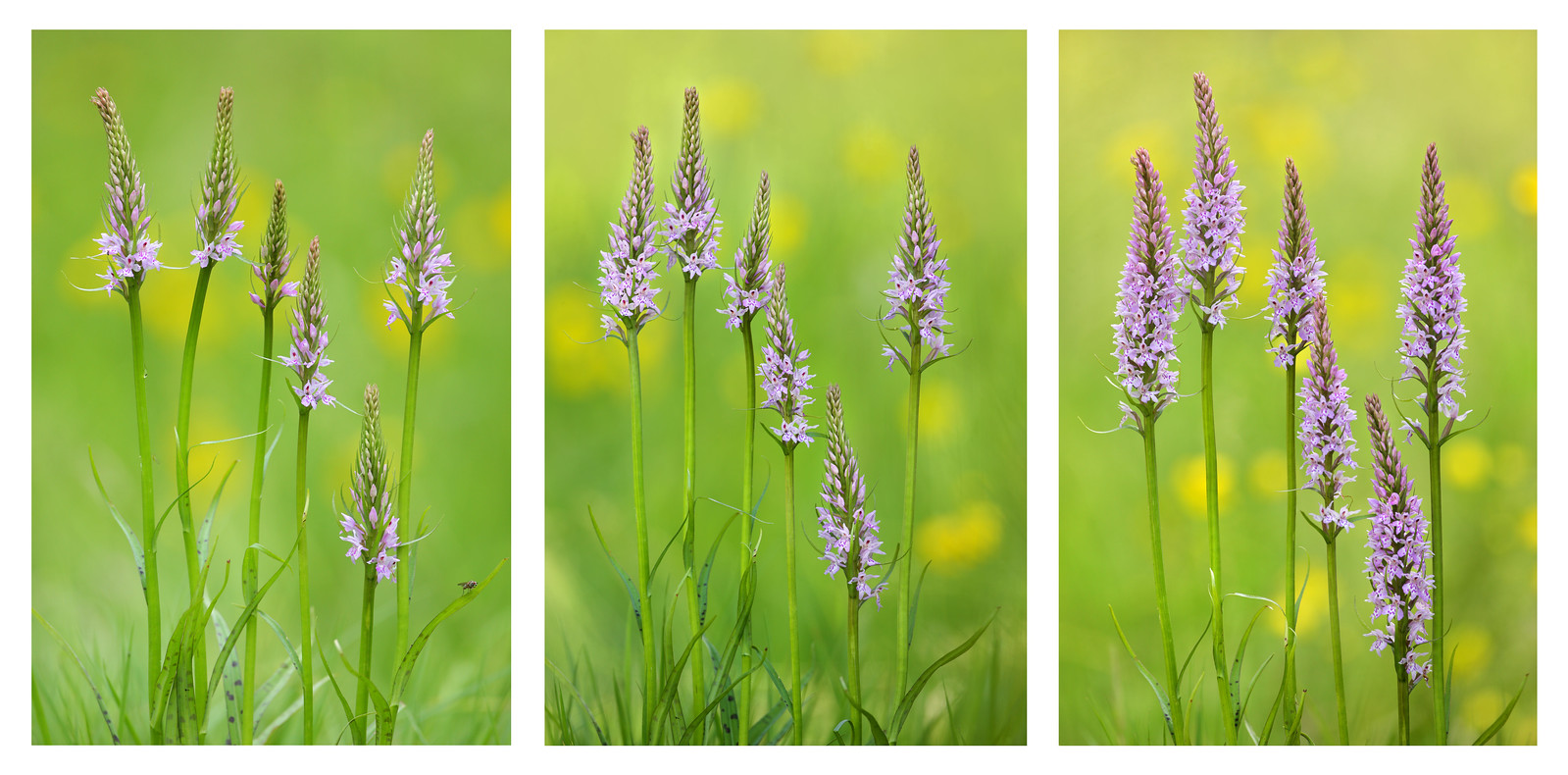
Prior to giving birth, the doe was relatively tolerant, but she has since become very hard to approach. The Kid became mobile very soon after it was born and wouldn't let me anywhere near it. I noticed that the bucks wasted little time moving into her field following the birth, in anticipation of getting their leg over during the rut.
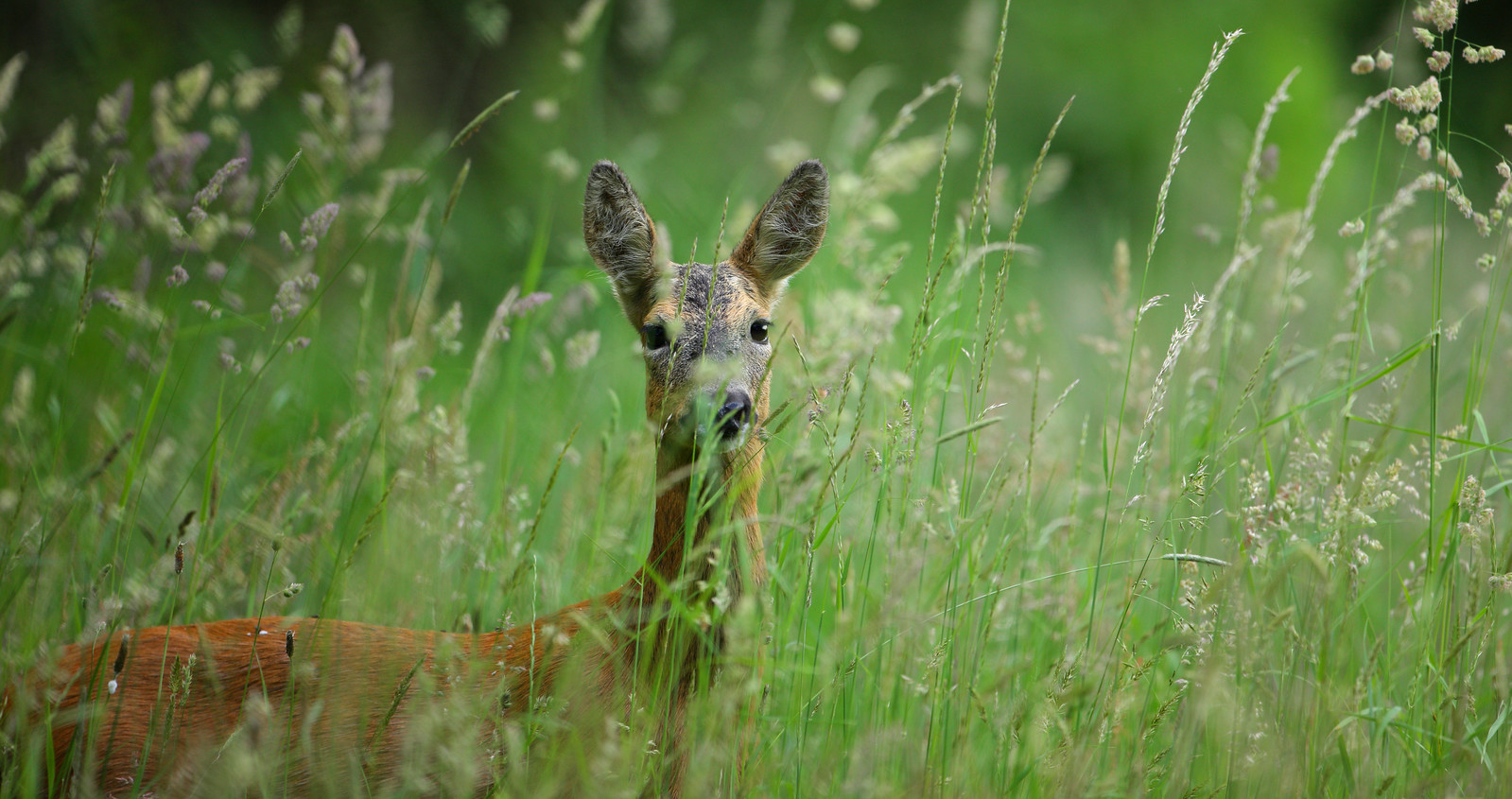
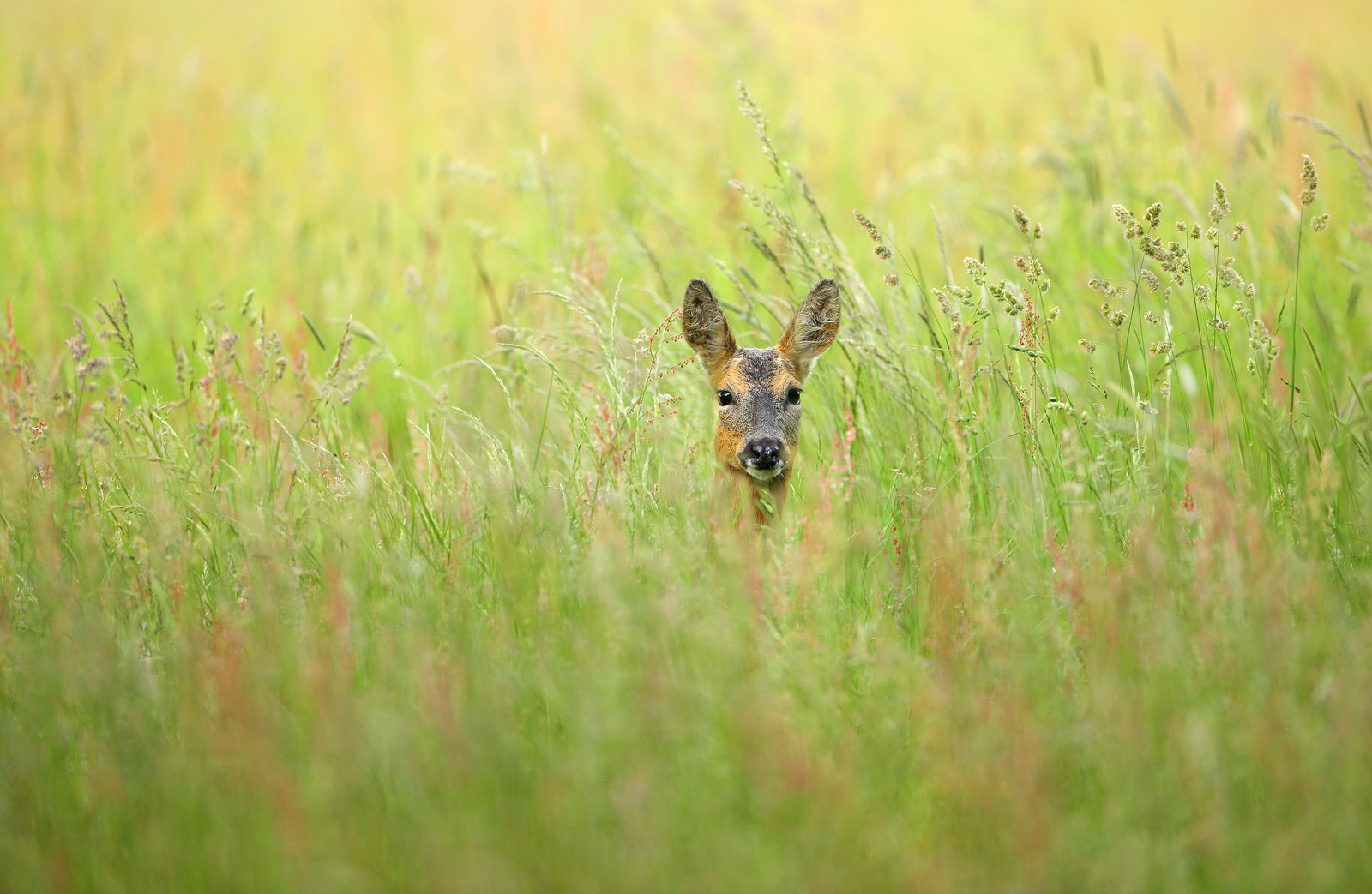
I spotted her tiny baby in the long grass, but it wouldn't be fair on the infant deer or its mother to attempt any close observation. I stand a better chance of photographing the Kid in early July, as it will have grown considerably by then.
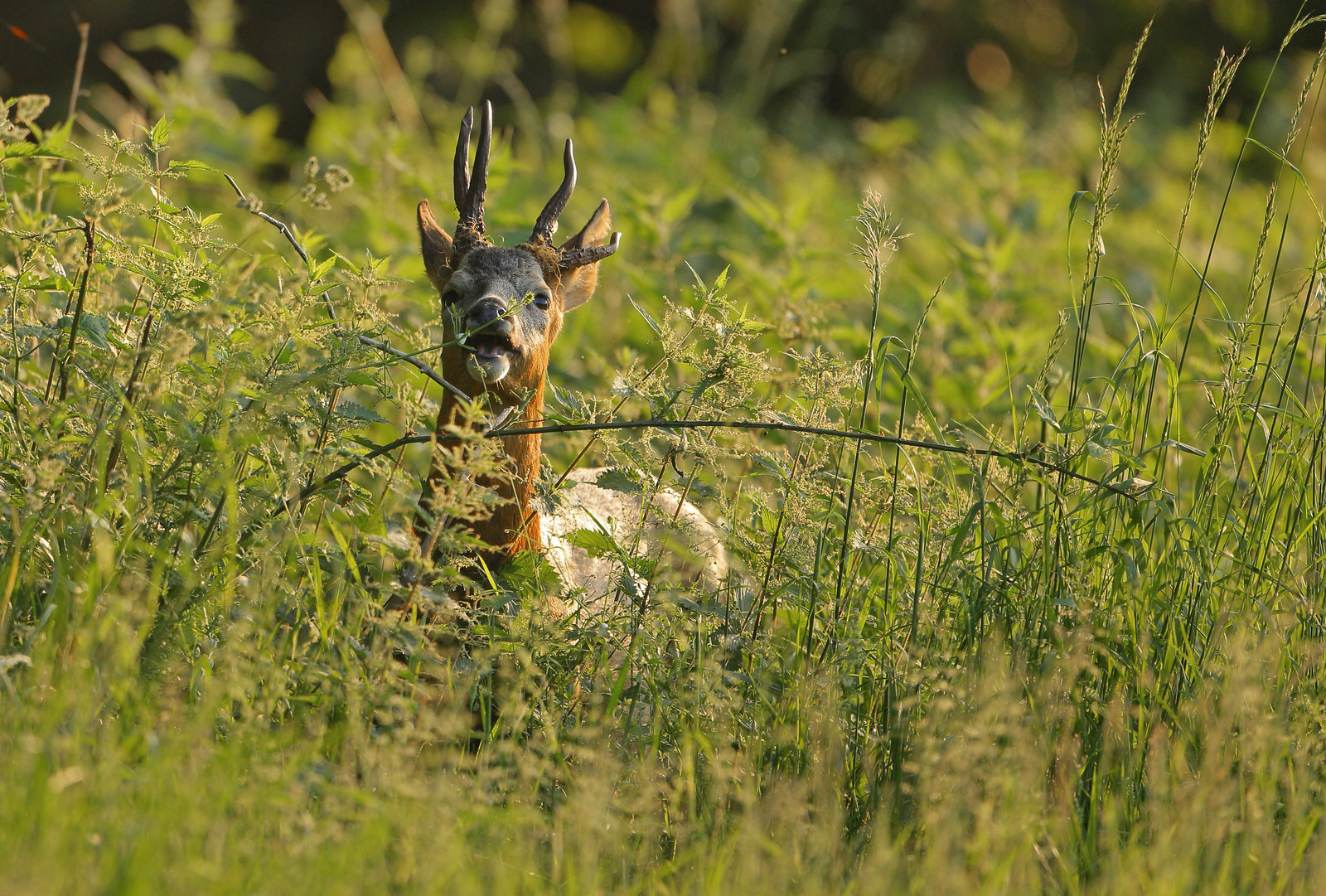
This buck recently moved into the same field as the yummy mummy in preparation for the rutting season, which takes place between mid-July and mid-August. I watched him for 10 minutes sitting in the long grass, getting more and more restless, knowing that he would soon get up and walk towards the field edge to graze. Roe deer use long grass as cover, but they prefer not to eat it.
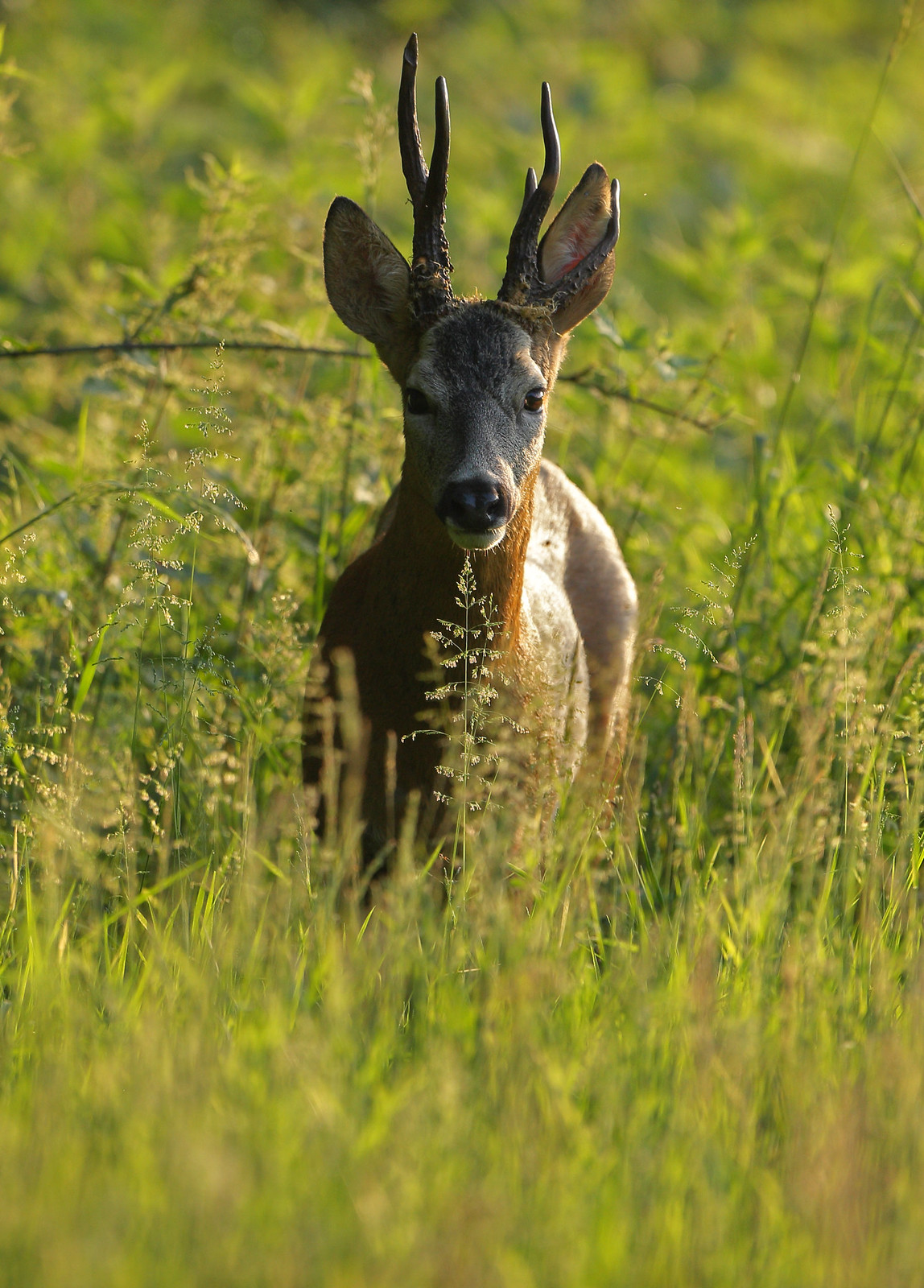
I must be the first wildlife photographer to ever make a Roe deer look sinister and scary. The Christopher Lee of the meadow faced me down for about a minute, before hopping off out of sight.
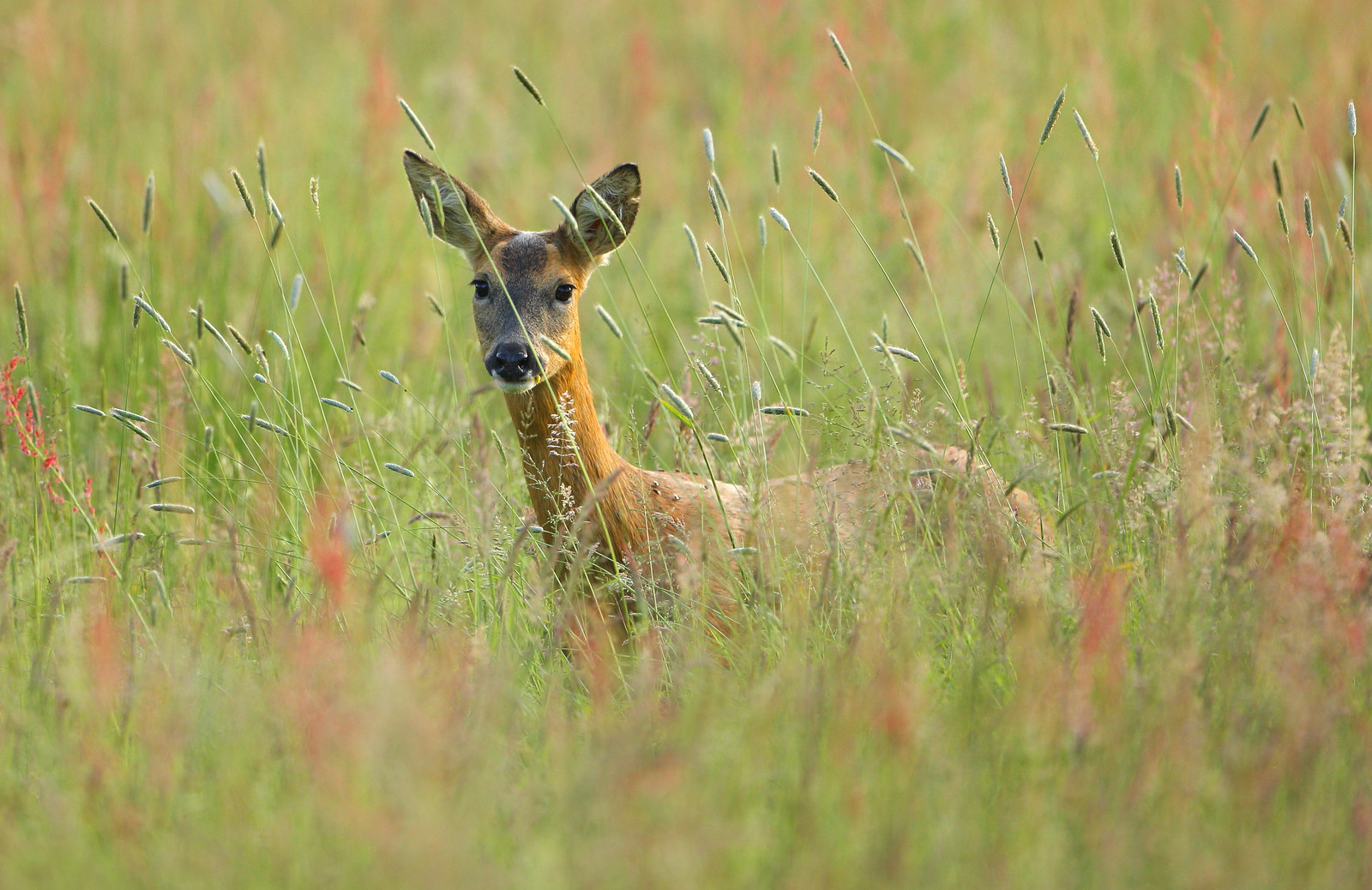
This particularly beautiful doe is living in the same field as the yummy mummy and her Kid. She didn't give birth this year, so perhaps the doe stands a better chance during the rut, as she can devote more time to courtship.
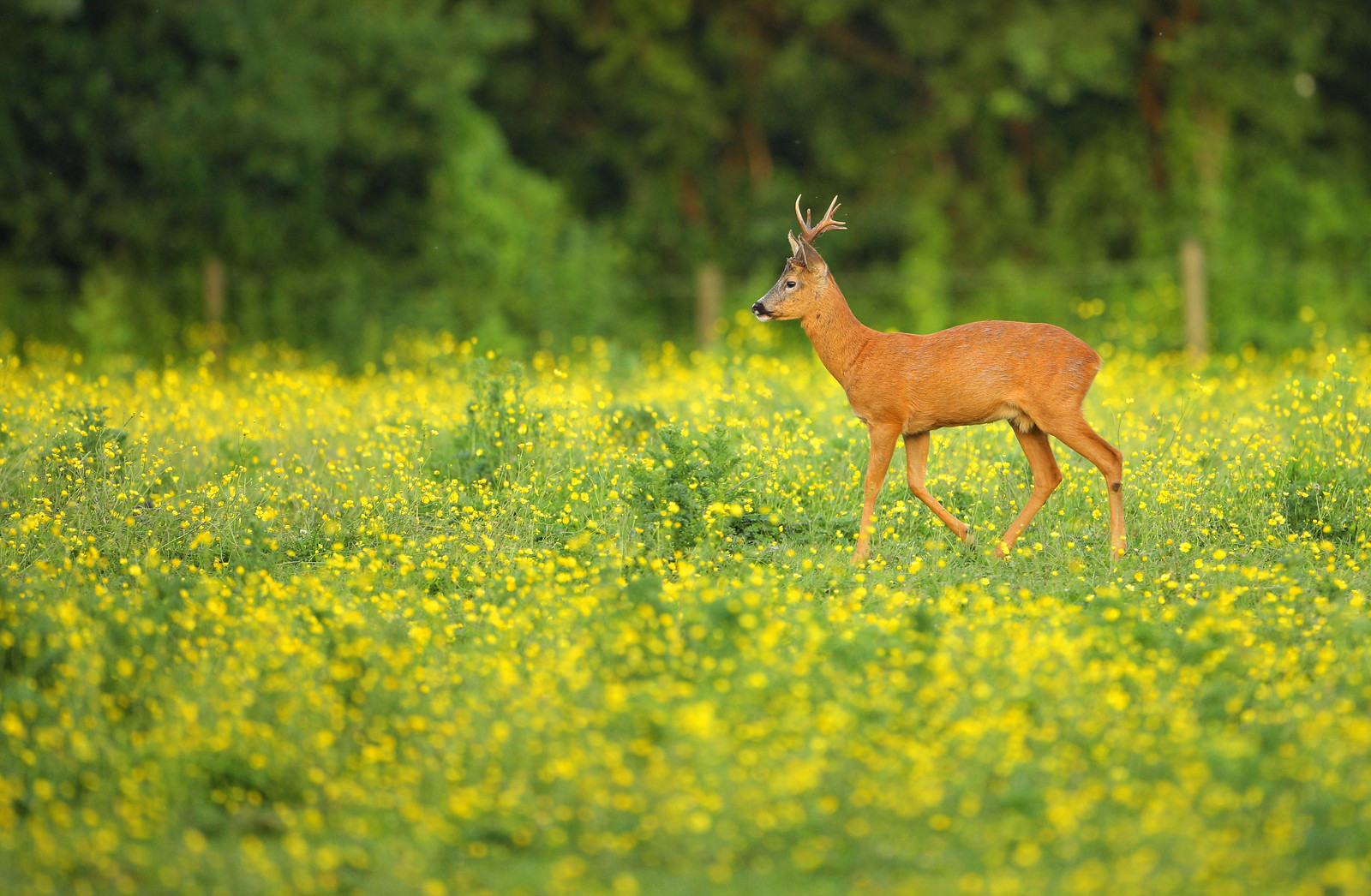
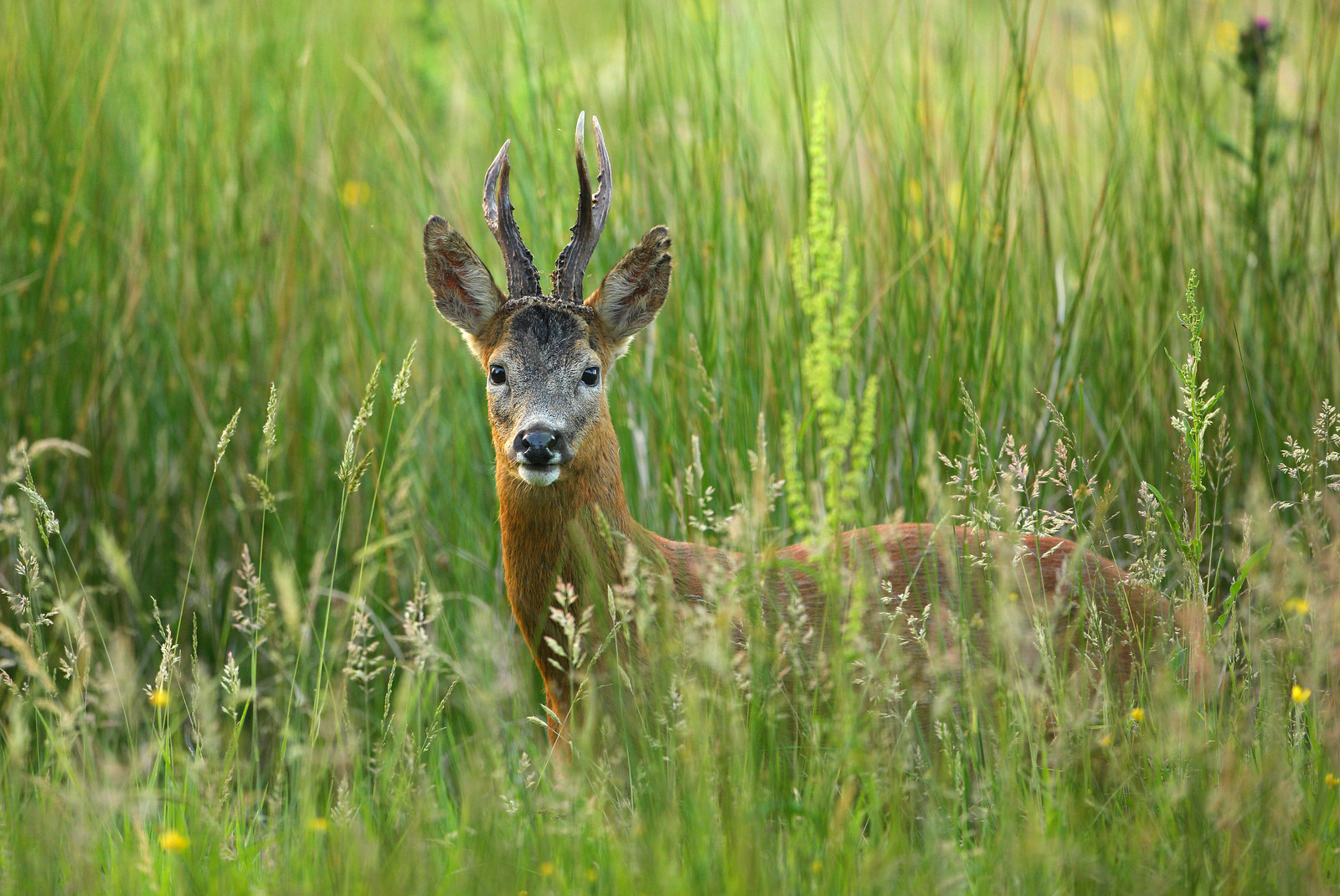
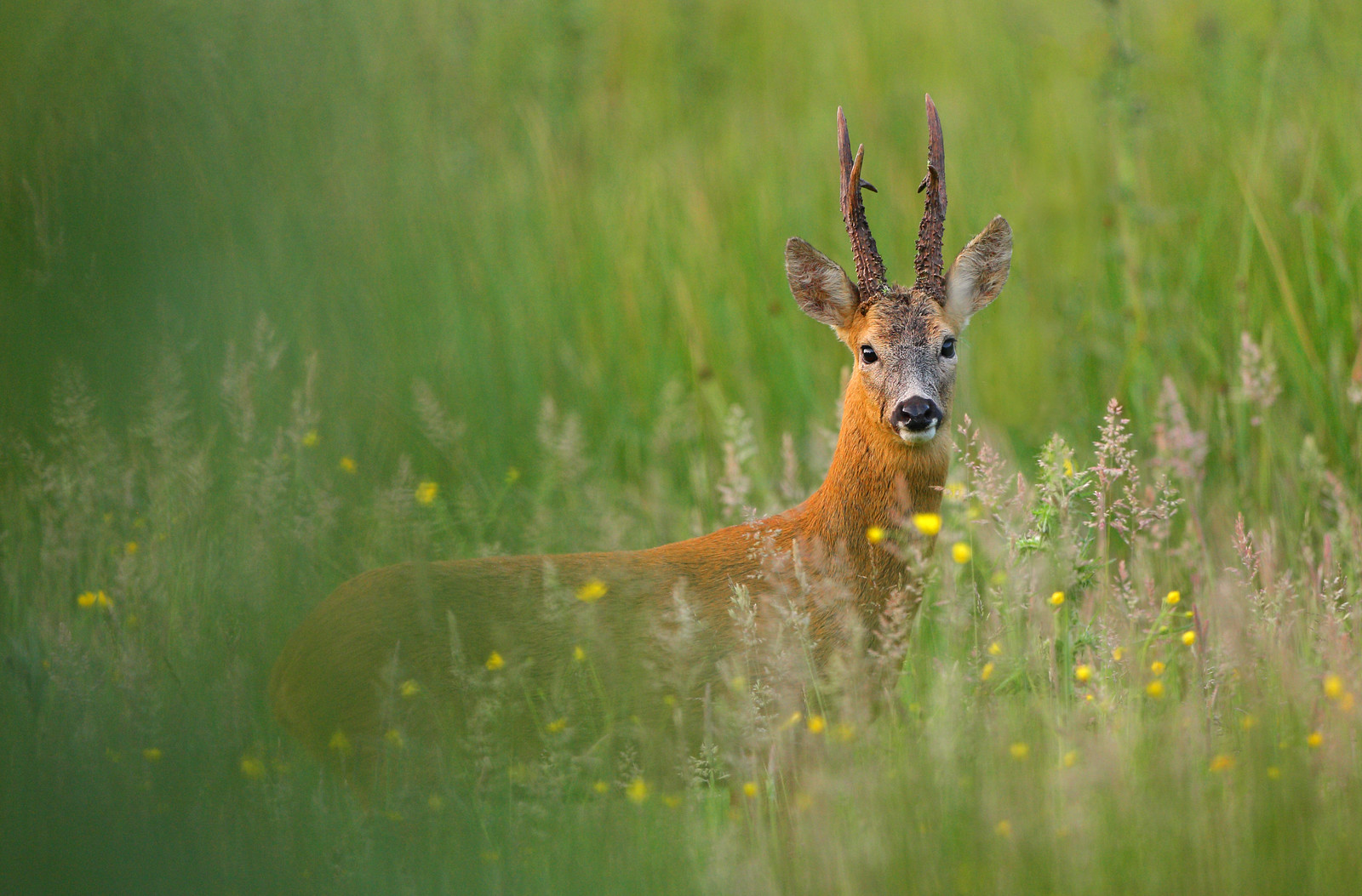
When I first heard this deer barking, I thought he'd been disturbed by people, but it quickly became apparent that nobody was about. Roe deer often bark to warn predators that they've been identified and not to bother with the pursuit. Without any obvious motivation for the prolonged barking (over 10 minutes), I wondered if the buck was simply in a bad mood, but it became clearer that this was an Alpha Male trying to assert his dominance over rivals. He emerged from the bushes and walked around the meadow, barking every 5 seconds and rubbing his antlers on thistles. Since the does gave birth a week ago, they have become more available. No animal would waste their energy trying to impregnate an already pregnant mate and it's no coincidence that 5 other bucks have now entered the meadow to win territory in preparation for the rutting season. I had to pack my stuff away and leave, but I could still hear the manspreading buck starting a fight in an empty meadow as I shot across a field towards the bus stop. It has been the perfect evening for deer stalking. Warm, but not hot. Few people about. An influx of newcomers and only one photographer.
I've enjoyed myself so much over the last three weeks. I didn't really want it to stop. Now, time for a vindaloo and a beer or twelve. And may I not set foot on a Thameslink train for at least 14 days. Next, I'll be following the rut, which begins in mid-July, so keep your eyes peeled.
Comments